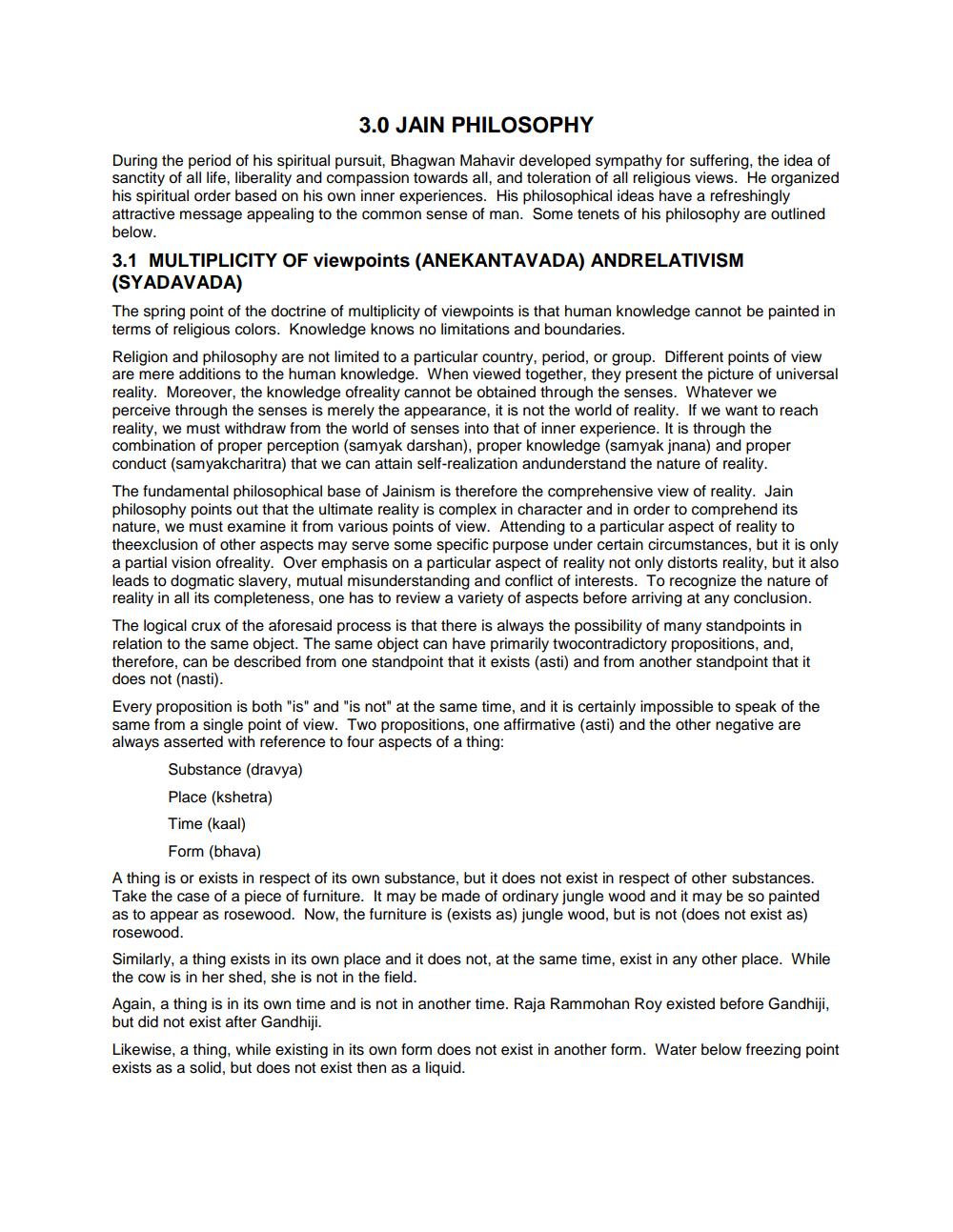________________
3.0 JAIN PHILOSOPHY
During the period of his spiritual pursuit, Bhagwan Mahavir developed sympathy for suffering, the idea of sanctity of all life, liberality and compassion towards all, and toleration of all religious views. He organized his spiritual order based on his own inner experiences. His philosophical ideas have a refreshingly attractive message appealing to the common sense of man. Some tenets of his philosophy are outlined below.
3.1 MULTIPLICITY OF viewpoints (ANEKANTAVADA) ANDRELATIVISM (SYADAVADA)
The spring point of the doctrine of multiplicity of viewpoints is that human knowledge cannot be painted in terms of religious colors. Knowledge knows no limitations and boundaries.
Religion and philosophy are not limited to a particular country, period, or group. Different points of view are mere additions to the human knowledge. When viewed together, they present the picture of universal reality. Moreover, the knowledge ofreality cannot be obtained through the senses. Whatever we perceive through the senses is merely the appearance, it is not the world of reality. If we want to reach reality, we must withdraw from the world of senses into that of inner experience. It is through the combination of proper perception (samyak darshan), proper knowledge (samyak jnana) and proper conduct (samyakcharitra) that we can attain self-realization andunderstand the nature of reality.
The fundamental philosophical base of Jainism is therefore the comprehensive view of reality. Jain philosophy points out that the ultimate reality is complex in character and in order to comprehend its nature, we must examine it from various points of view. Attending to a particular aspect of reality to theexclusion of other aspects may serve some specific purpose under certain circumstances, but it is only a partial vision ofreality. Over emphasis on a particular aspect of reality not only distorts reality, but it also leads to dogmatic slavery, mutual misunderstanding and conflict of interests. To recognize the nature of reality in all its completeness, one has to review a variety of aspects before arriving at any conclusion.
The logical crux of the aforesaid process is that there is always the possibility of many standpoints in relation to the same object. The same object can have primarily twocontradictory propositions, and, therefore, can be described from one standpoint that it exists (asti) and from another standpoint that it does not (nasti).
Every proposition is both "is" and "is not" at the same time, and it is certainly impossible to speak of the same from a single point of view. Two propositions, one affirmative (asti) and the other negative are always asserted with reference to four aspects of a thing:
Substance (dravya)
Place (kshetra)
Time (kaal)
Form (bhava)
A thing is or exists in respect of its own substance, but it does not exist in respect of other substances. Take the case of a piece of furniture. It may be made of ordinary jungle wood and it may be so painted as to appear as rosewood. Now, the furniture is (exists as) jungle wood, but is not (does not exist as) rosewood.
Similarly, a thing exists in its own place and it does not, at the same time, exist in any other place. While the cow is in her shed, she is not in the field.
Again, a thing is in its own time and is not in another time. Raja Rammohan Roy existed before Gandhiji, but did not exist after Gandhiji.
Likewise, a thing, while existing in its own form does not exist in another form. Water below freezing point exists as a solid, but does not exist then as a liquid.




